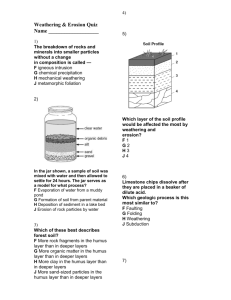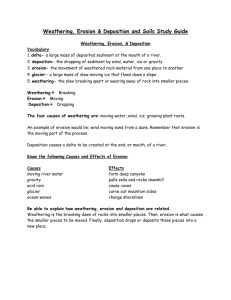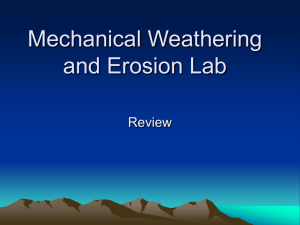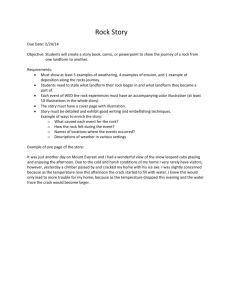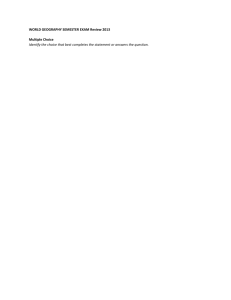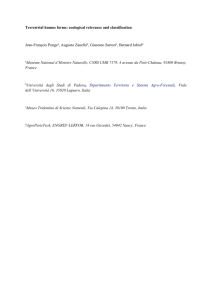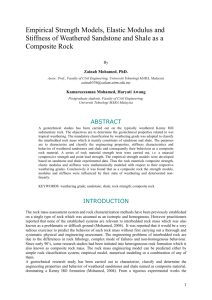Ch. 4 Quiz
advertisement
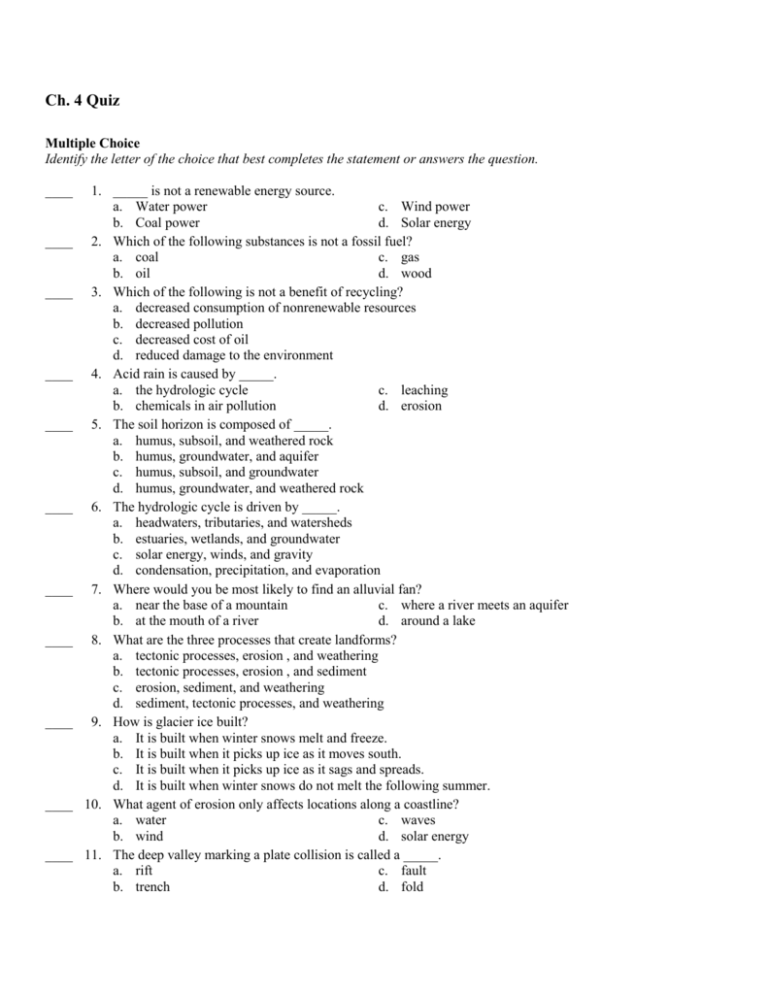
Ch. 4 Quiz Multiple Choice Identify the letter of the choice that best completes the statement or answers the question. ____ ____ ____ ____ ____ ____ ____ ____ ____ ____ ____ 1. _____ is not a renewable energy source. a. Water power c. Wind power b. Coal power d. Solar energy 2. Which of the following substances is not a fossil fuel? a. coal c. gas b. oil d. wood 3. Which of the following is not a benefit of recycling? a. decreased consumption of nonrenewable resources b. decreased pollution c. decreased cost of oil d. reduced damage to the environment 4. Acid rain is caused by _____. a. the hydrologic cycle c. leaching b. chemicals in air pollution d. erosion 5. The soil horizon is composed of _____. a. humus, subsoil, and weathered rock b. humus, groundwater, and aquifer c. humus, subsoil, and groundwater d. humus, groundwater, and weathered rock 6. The hydrologic cycle is driven by _____. a. headwaters, tributaries, and watersheds b. estuaries, wetlands, and groundwater c. solar energy, winds, and gravity d. condensation, precipitation, and evaporation 7. Where would you be most likely to find an alluvial fan? a. near the base of a mountain c. where a river meets an aquifer b. at the mouth of a river d. around a lake 8. What are the three processes that create landforms? a. tectonic processes, erosion , and weathering b. tectonic processes, erosion , and sediment c. erosion, sediment, and weathering d. sediment, tectonic processes, and weathering 9. How is glacier ice built? a. It is built when winter snows melt and freeze. b. It is built when it picks up ice as it moves south. c. It is built when it picks up ice as it sags and spreads. d. It is built when winter snows do not melt the following summer. 10. What agent of erosion only affects locations along a coastline? a. water c. waves b. wind d. solar energy 11. The deep valley marking a plate collision is called a _____. a. rift c. fault b. trench d. fold ____ 12. What are folds? a. places where rock masses have broken apart and moved away from each other b. places where rocks have been compressed into bends c. places where sediment has been layered d. places where rocks have been weathered ____ 13. According to the map above, which continent is NOT a major source for the world’s oil? a. Europe c. Australia b. North America d. Asia Read the following passage, and then answer the following questions. Scientists use the theory of plate tectonics to explain the long history of Earth’s surface. They believe that about 200 million years ago all the modern continents were part of one supercontinent called Pangaea. Pangaea then broke up into two smaller supercontinents called Gondwana and Laurasia. These two, in turn, broke into the modern continents during the last 100 million years. The theory of plate tectonics helps explain the “fit” between the coastlines of Africa and South America. Rock formations that match up across the boundaries provide more evidence. ____ 14. The author’s aim of this passage is to — a. persuade. c. explain. b. narrate. d. satirize. ____ 15. Which sentence BEST states the main idea of the passage? a. Rock formations that match up across the boundaries provide more evidence. b. The theory of plate tectonics helps explain the “fit” between the coastlines of Africa and South America. c. Pangaea then broke up into two smaller supercontinents called Gondwana and Laurasia. d. Scientists use the theory of plate tectonics to explain the long history of Earth’s surface. Matching Match each item with the correct statement below. a. core g. b. tributary h. c. magma i. d. watershed j. e. weathering k. f. leaching l. ____ ____ ____ ____ ____ ____ ____ ____ ____ ____ 16. 17. 18. 19. 20. 21. 22. 23. 24. 25. water table humus erosion headwaters acid rain soil salinization liquid rock within Earth any smaller stream or river that flows into a larger stream or river the level below ground at which all the spaces inside rock are filled with water Earth's center broken down plant and animal material the entire region drained by a river and its tributaries the movement of surface material from one location to another salt buildup in the soil the downward movement of minerals and humus in the soil water vapor that contains chemicals from air pollution
